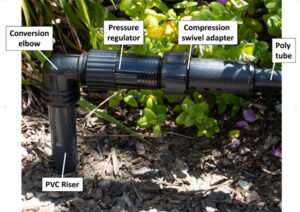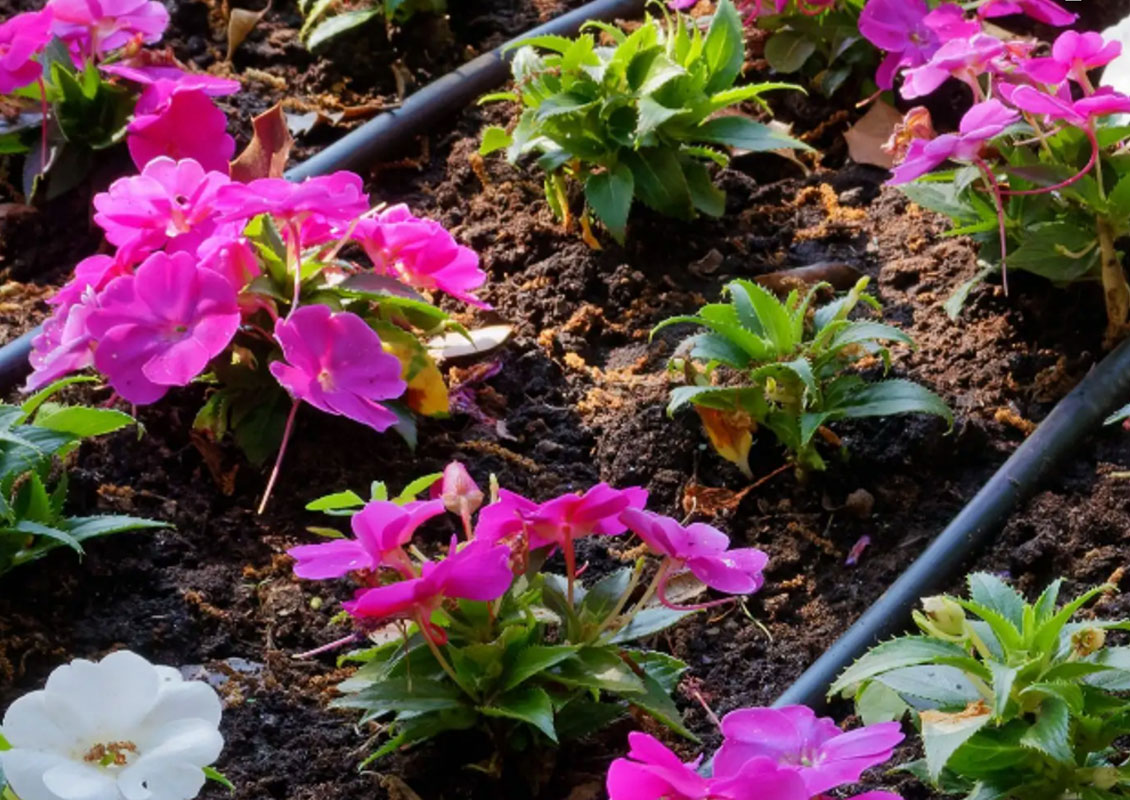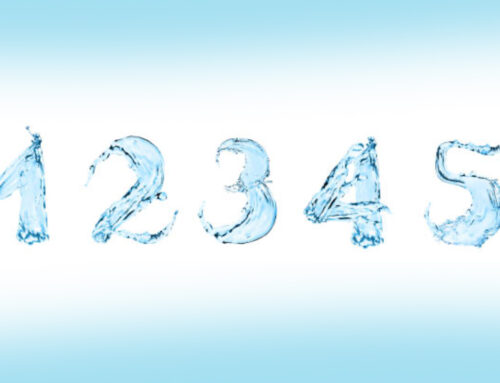Overhead sprayers are useful for watering grass lawns, but they are inefficient for other types of landscaping. We’ve all seen what happens when sprinklers are running on a windy day – the water goes everywhere it shouldn’t, and some of the spray evaporates before it hits the ground.
The best way to water shrubs, hedges, flower beds, small trees/plants, vegetable gardens, and desert-native plants is with low-pressure drip irrigation. Even larger trees and palms can be watered with drippers when used correctly. Instead of spraying an inefficient mist, you can deliver water just to where you need it – the roots of your plants.
Converting to drip is an easy DIY project:
- Each sprinkler head is attached to a ½” PVC riser, which connects to an underground water line. Remove the sprinkler head to expose the riser. Wrap some plumbing tape around the riser’s threads and screw on a ½” x ¾” conversion elbow.
- Wrap some plumbing tape around the threads of the conversion elbow, and screw on a ¾” 25-psi pressure regulator.
- Wrap some plumbing tape around the threads of the pressure regulator and screw on a ¾” x ½” compression swivel adapter.
- Secure one end of ½” poly drip irrigation tubing into the compression adapter. Now, when the irrigation system turns on, water will be delivered through the ½” poly tubing at low pressure.
- Unfurl the ½” poly drip irrigation tubing and lay it on the landscape around the drip zones of your plants. Think of where rainfall would naturally land – this is the drip zone.
- Use a clamp or ½” compression end cap to close the tube at the end of the line.
- Use a punch tool to poke a hole in the ½” poly tube. Then, simply plug in a dripper. Drippers can be purchased at different flow rates, such as: 0.5 gph, 1 gph, 2 gph, or 4 gph.
- If necessary, attach a ¼” barb connector to the ½” poly tube, and attach a length of ¼” poly micro tubing to the barb. This will extend the drip system farther out. Attach a dripper to the end of the ¼” poly tube wherever it is needed.

A PVC riser with conversion elbow, pressure regulator, compression swivel adapter, and poly irrigation tube
All of the above tools and supplies can be purchased at a local hardware or irrigation supply store. Drip tubing can be configured in many ways for many different uses on the landscape, as well as for potted plants. For a cleaner look, bury the main ½” tubing a few inches under the soil surface and extend drippers above the ground with micro tubes. Check the hardware or irrigation store for more ideas and options.
To find out if your water agency offers rebates on drip conversions or other irrigation upgrades, visit our Rebates Page.






